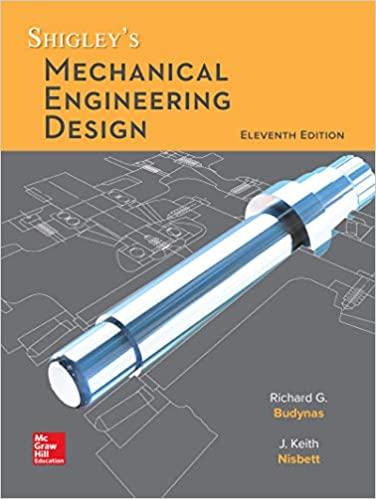With the same bearing dimensional specifications and fluid viscosity used in Problem 1221, the load now rotates
Question:
With the same bearing dimensional specifications and fluid viscosity used in Problem 12–21, the load now rotates with the journal; i.e. Fx = 3000 cos ωt, Fy = 3000 sin ωt, where ω = 200 rad/s is the steady journal angular velocity.
Data in Problem 12–21
Consider a journal bearing of length 25 mm, diameter 50 mm, and radial clearance 25 µm. The dynamic viscosity of the lubricant is 7 mPa × s. In the computing reference frame of Figure 12–34, the journal is rotating at a constant angular velocity of 200 rad/s, and the sleeve is fixed. At time t = 0, the journal is initially positioned with journal eccentricity ratio components εx = −0.8, ey = −0.3. At time t = 0, a steady load with components Fx = 3000 N, Fy = 0 N is applied to the journal.
(a) Starting the journal at the same initial position as in Problem 12-21, calculate and plot the journal orbit in the clearance space from t = 0 to the time it takes the journal to rotate one revolution (360°). Use Euler integration and a time step equal to 0.5° of journal rotation. Indicate the location of the journal eccentricity ratio at 90° intervals on the plot.
(b) Describe the resulting periodic orbit shape and estimate the cyclic minimum
film thickness. Compare your answer with that obtained from Problem 12-21.
Step by Step Answer:

Shigleys Mechanical Engineering Design
ISBN: 9780073398211
11th Edition
Authors: Richard G. Budynas, J. Keith Nisbett





